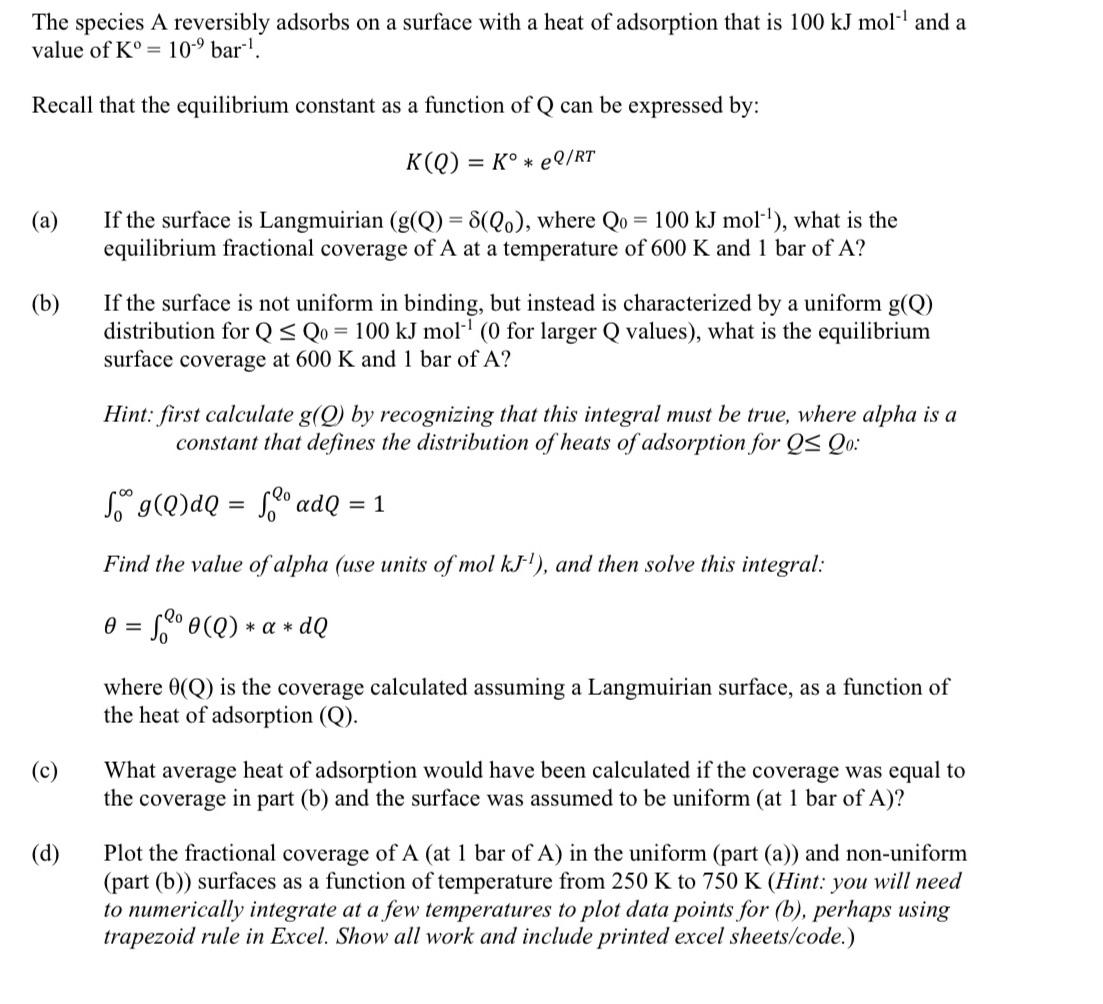Answered step by step
Verified Expert Solution
Question
1 Approved Answer
The species A reversibly adsorbs on a surface with a heat of adsorption that is 100 kJ mol and a value of K 109

The species A reversibly adsorbs on a surface with a heat of adsorption that is 100 kJ mol and a value of K 109 bar. Recall that the equilibrium constant as a function of Q can be expressed by: K(Q) = KeQ/RT (a) = If the surface is Langmuirian (g(Q) 8(Qo), where Qo = 100 kJ mol), what is the equilibrium fractional coverage of A at a temperature of 600 K and 1 bar of A? (b) (c) (d) If the surface is not uniform in binding, but instead is characterized by a uniform g(Q) distribution for Q Qo = 100 kJ mol (0 for larger Q values), what is the equilibrium surface coverage at 600 K and 1 bar of A? Hint: first calculate g(Q) by recognizing that this integral must be true, where alpha is a constant that defines the distribution of heats of adsorption for Q Qo: Sg(Q)dQ = f adQ = 1 Find the value of alpha (use units of mol kJ), and then solve this integral: 0 = 5000 (Q) * a * dQ where 0(Q) is the coverage calculated assuming a Langmuirian surface, as a function of the heat of adsorption (Q). What average heat of adsorption would have been calculated if the coverage was equal to the coverage in part (b) and the surface was assumed to be uniform (at 1 bar of A)? Plot the fractional coverage of A (at 1 bar of A) in the uniform (part (a)) and non-uniform (part (b)) surfaces as a function of temperature from 250 K to 750 K (Hint: you will need to numerically integrate at a few temperatures to plot data points for (b), perhaps using trapezoid rule in Excel. Show all work and include printed excel sheets/code.)
Step by Step Solution
There are 3 Steps involved in it
Step: 1

Get Instant Access to Expert-Tailored Solutions
See step-by-step solutions with expert insights and AI powered tools for academic success
Step: 2

Step: 3

Ace Your Homework with AI
Get the answers you need in no time with our AI-driven, step-by-step assistance
Get Started


